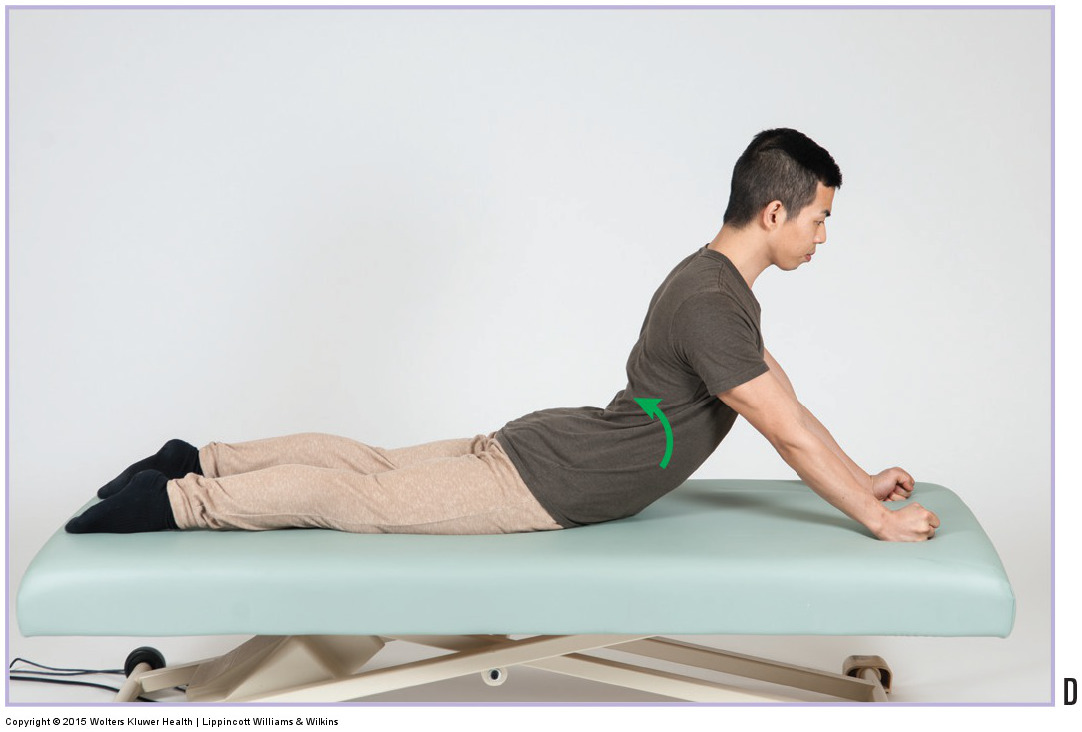McKenzie Exercises
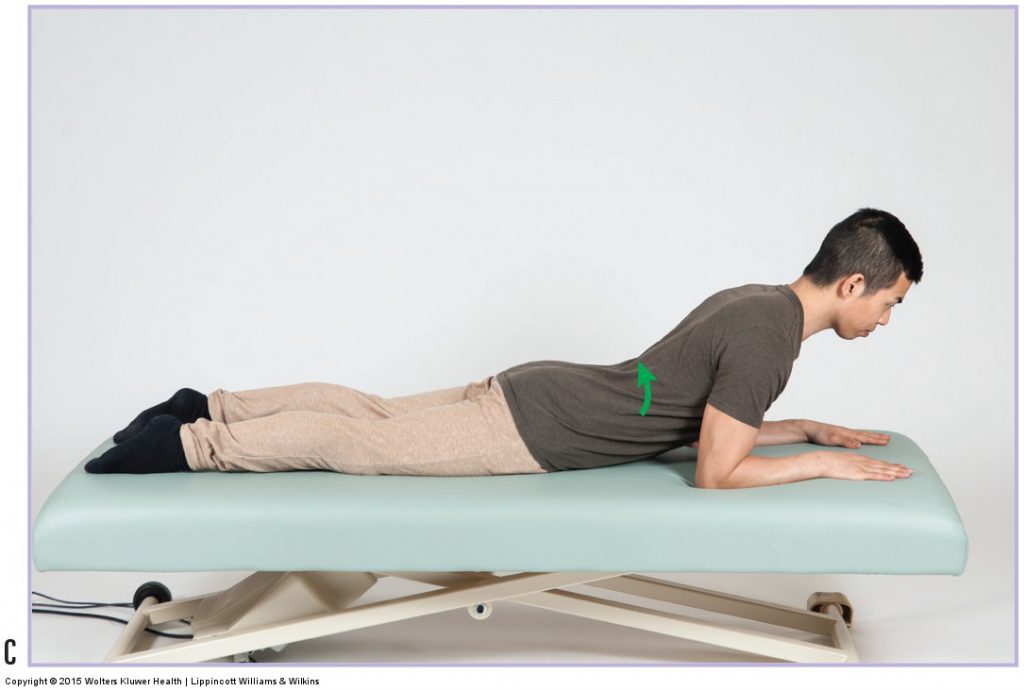
Back Extension Exercise – 1 – Permission Joseph E. Muscolino – Manual Therapy for the Low Back and Pelvis – A Clinical Orthopedic Approach (2015)
McKenzie exercises, back extension (backward bending) exercises, have been proposed to relieve low back pain. The extension exercises reduce intradiscal pressure by shifting the compression weight-bearing load of the body posteriorly away from the discs and onto the facet (zygapophyseal) joints.
Mechanism
This is hypothesized to enhance/promote the reabsorption or redistribution of the disc fluid (nucleus pulposus) within the disc. These effects could improve the internal stability (pressure against the annular fibers) and local chemical composition of the disc, potentially reducing pain symptoms.
Quantification of diffusion of fluid within the disc in vivo has been difficult to determine due to technical limitations. Now a new instrument called Mean Signal Intensity (MSI) Magnetic Resonance Imaging (MRI) can be used to measure the fluid content of intervertebral disc (IVD).
Study
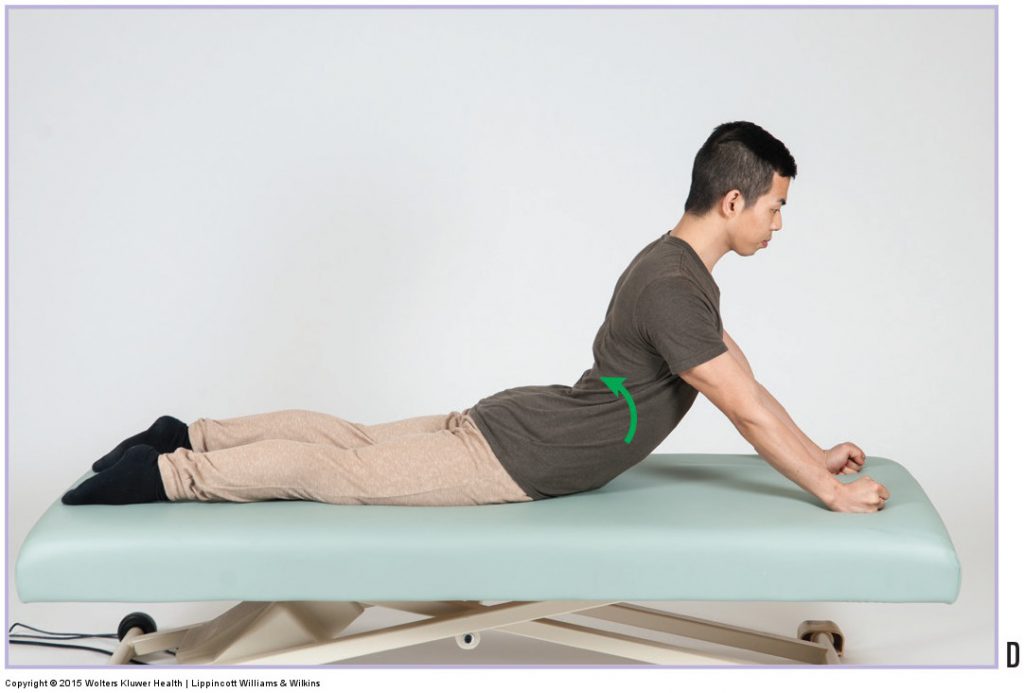
Back Extension Exercise – 2 – Permission Joseph E. Muscolino – Manual Therapy for the Low Back and Pelvis – A Clinical Orthopedic Approach
The research published in Musculoskeletal Science and Practice investigated the immediate effects of prone press-up McKenzie exercises on lumbar disc fluid content and movement.
The mid-sagittal MRI images of 22 volunteers with low back pain were obtained before and immediately after performing a press-up extension exercise. The whole disc and nucleus regions of the L4-5 and L5-S1 discs were analysed to estimate disc fluid content and displacement.
Fluid content was measured using MSI MRI, with an increase in MSI being attributed to an increase in the fluid content of the disc. Displacement of fluid was calculated from the MSI Signal Intensity Weighted Centroid (SIWC) as the average signal intensity, which reflects movement or changes in the distribution of fluid.
Results
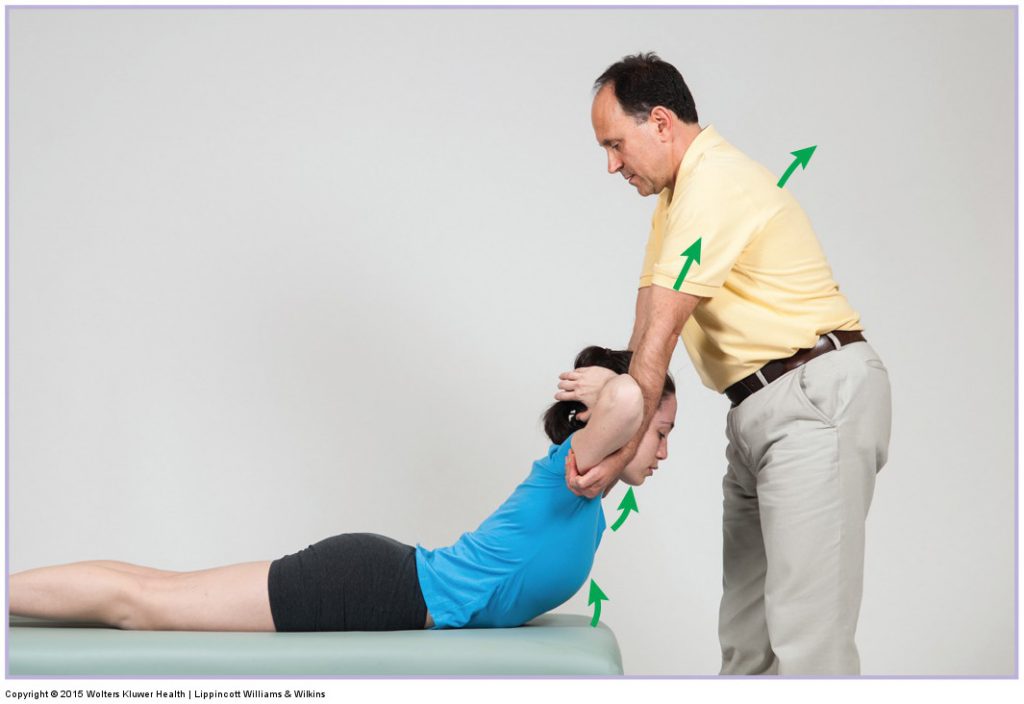
Back extension stretch – Permission Joseph E. Muscolino – Manual Therapy for the Low Back and Pelvis – A Clinical Orthopedic Approach (2015)
The results show that there were no significant differences in signal intensity (a measure of fluid content) of the whole disc before and after extension at either disc level measured with McKenzie exercises.
However, there was an anterior displacement of the location of the fluid of the disc after extension exercise at L4-5, which indicates more fluid concentration in the anterior part of the disc after the exercises. But, anterior fluid displacement was not observed in L5-S1.
Conclusion
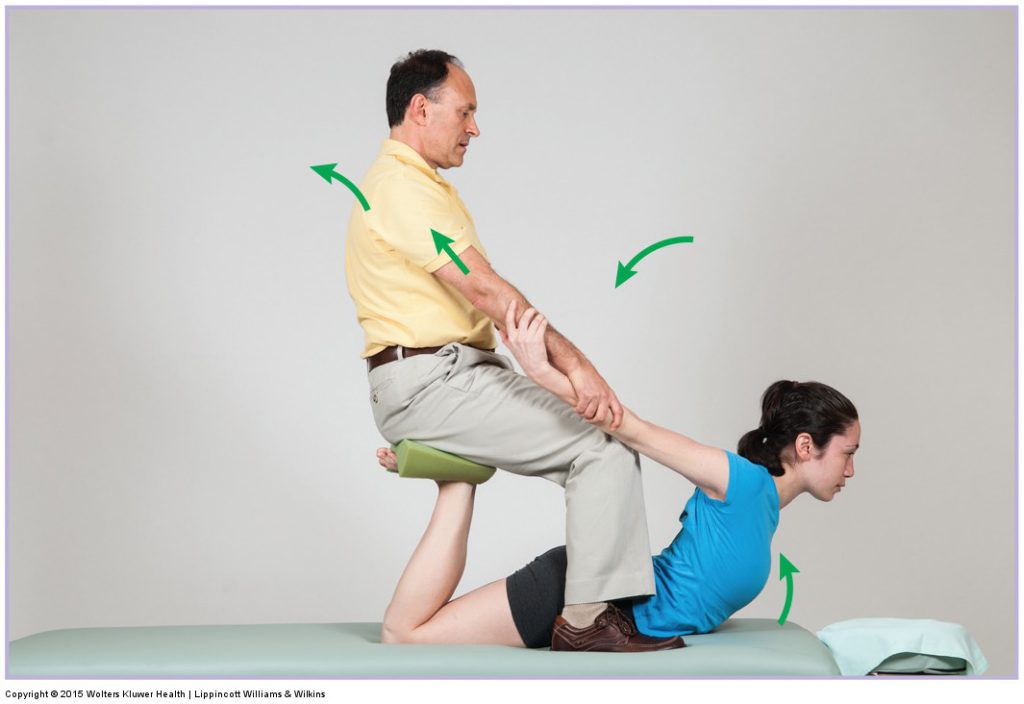
Low Back Extension Stretch – Permission Joseph E. Muscolino – Manual Therapy for the Low Back and Pelvis – A Clinical Orthopedic Approach (2015)
The authors concluded that little evidence was found supporting the hypothesis that press-up extension McKenzie exercises affect disc fluid content and distribution.
The authors suggest that the effectiveness of back extension exercise is likely to occur through mechanisms other than changing fluid content or distribution.
This blog post article was created in collaboration with www.TerraRosa.com.
(Click here for the blog post article: Pathologic Conditions of the Lumbar Spine and Sciatica.)


